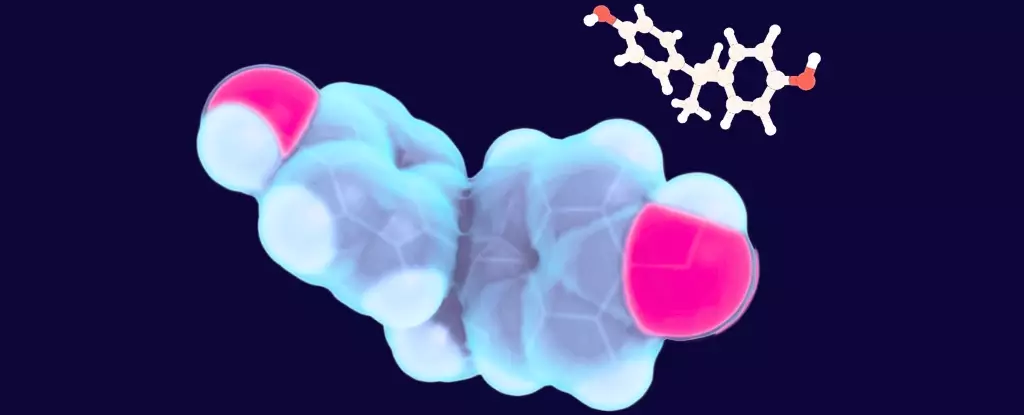In recent years, society has witnessed a concerning surge in the diagnoses of autism spectrum disorder (ASD) and attention deficit hyperactivity disorder (ADHD). These conditions, which impact the cognitive and behavioral development of children, raise significant questions about their origins. As researchers and medical experts delve deeper into the intricacies of these disorders, the interplay of genetic predispositions and environmental factors emerges as a focal point. One compelling study published in 2023 puts the spotlight on a particular environmental pollutant: bisphenol A (BPA), a ubiquitous compound known for its presence in numerous plastics and consumer goods.
Understanding BPA and Its Implications
BPA, primarily used in the production of various plastic materials and commonly found in food packaging, has garnered considerable attention due to its potential health risks. Amidst growing concerns, scientific investigations have linked BPA exposure to a range of adverse health effects, from hormone disruption to serious conditions like infertility and breast cancer. The recent study led by researchers from Rowan University and Rutgers University takes these findings a step further by exploring how children with neurodevelopmental disorders clear BPA from their systems compared to their neurotypical peers.
The groundbreaking aspect of this research is its profound implication: children diagnosed with ASD and ADHD exhibit a compromised ability to metabolize and eliminate BPA effectively. By examining a sample group consisting of 149 children—66 with autism, 46 with ADHD, and 37 neurotypical individuals—the study reveals that those with ASD and ADHD retain higher levels of BPA, potentially languishing in their systems longer and exposing their developing tissues to harmful effects.
Examining the Detoxification Process
At the core of this research lies the process known as glucuronidation, a vital mechanism through which the body detoxifies and excretes harmful substances through urine. The study findings indicate a notable reduction in detoxification efficiency among the affected children: approximately 11 percent for those with ASD and 17 percent for those with ADHD compared to the control group. These differences raise critical questions about the genetic and biochemical pathways that underlie such dysfunctions, suggesting a complex web of interactions that might influence detoxification rates.
Molecular variations, particularly gene mutations, are posited as key elements in understanding why certain children struggle more than others to detoxify BPA. These insights hint at the multifaceted nature of ASD and ADHD, suggesting that the development of these disorders cannot be pinned solely on genetics or environmental factors. Instead, it’s a complicated interplay of both, demanding further research into how they manifest throughout various stages of life.
The Bigger Picture: An Urgency for Awareness
While the study emphasizes BPA, it is crucial to note that not every child diagnosed with ASD or ADHD faced similar detoxification challenges. This variance highlights the need for continued exploration into other contributing factors, and the call to action extends beyond the scientific community; it beckons parents, educators, and policymakers to recognize the potentially damaging impact of toxic environmental exposures on neurodevelopment.
As our understanding of the relationship between neurodevelopmental disorders and environmental toxins expands, a broader conversation about public health and safety is not only warranted but essential. With the mounting mound of epidemiological evidence suggesting a connection between neurodevelopmental disorders and pollutants like BPA, the urgency for heightened awareness and proactive measures becomes clear. This will not only empower families with knowledge but will also foster an environment where legislative action can be pursued to limit the use of potentially harmful substances.
Charting the Future of Research
The research on BPA and neurodevelopmental disorders represents only a small yet significant piece of a larger puzzle. Questions surrounding the timing of exposure—whether it occurs in utero or later in childhood—remains a critical area for future studies. As scientists work diligently to decode the origins and exacerbating factors of ASD and ADHD, it is imperative for society to engage in preventive strategies that prioritize the health of our children.
This revolutionary inquiry into the hidden dangers lurking in our environments prompts a fundamental shift in how we perceive and tackle the issues surrounding autism and ADHD. As knowledge grows, so too does the responsibility of the broader community to not only advocate for healthier living conditions but to ensure that the future of our children is safeguarded against the toxic remnants of our industrialized world.

